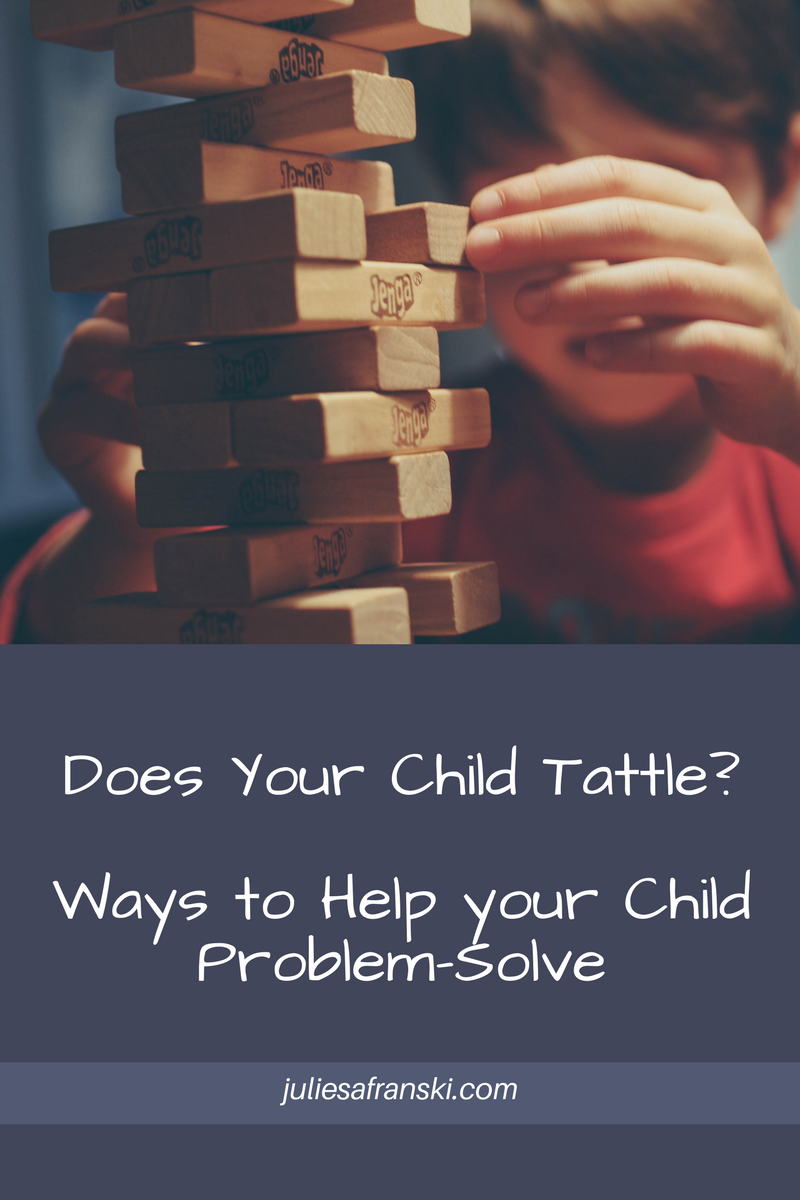No one likes to be a tattle tale. I remember as a kid, if you were called a tattle tale it was the social kiss of death. You were teased, kids didn’t trust you and they remembered for a long time afterwards that you told an adult. Even one study demonstrated that those who were perceived to be tattling were considered less liked by their peers.
Nowadays, children do not have the same social opportunities to “free-play” as today’s parents once did. Through non-structured play, children naturally develop the skills of negotiating, compromising and learn the nuances of social interactions. Most kids are involved in many community and extra-curricular activities that are facilitated by adults. These are great opportunities as they teach children how to work in groups, learn how to follow directions from others, develop teamwork skills etc. But they rarely get the chance to work out conflicts and practice coming up solutions on their own independent of adults. And there are times when we want our kids to inform adults for behaviors that are physically harmful or threatening such as bullying. So how do we build resiliency and make sure our kids know when to tell an adult without being a social pariah?
When working with elementary-aged children, I use the language of reporting versus tattling. What is the difference? You are tattling when you want to get someone in trouble. It is also tattling, if the behavior is not harming anyone even though it may be annoying. If the issue is considered to be not important (e.g. not a health emergency or not a lot of people are affected), an adult does not need to get involved. Also, it is considered tattling if the behavior was an accident as no one meant harm. Lastly, if the problem can be solved independently it would be considered tattling. So reporting is about letting an adult know if someone’s well being is of concern. If someone is physically hurt or threatening harm such as bullying, an adult needs to be told right away. Also, it needs to be reported to an adult if the person intending to hurt you on purpose or you need to keep someone safe. Lastly, I tell kids that if it is a problem that adult needs to help you solve. But I’d like to go one step further. If there isn’t any danger or no one is getting hurt, I would prefer a child tell an adult AFTER they have tried two things to solve the problem and it hasn’t worked. Most kids get stuck on this and they would rather go to an adult first. Here are some suggestions you can give your child to deal with a problematic social situation:
- Ask them to stop
- Walk away and find something else to do
- Walk away and cool off
- Ignore it
- Use an I-Message (“I feel_____ when you______ can you next time________”)
- Talk it out and find a compromise
- Apologize
Or if you want to simplify tattling versus reporting, I have also seen teachers use in classrooms the 4 B’s of when to tell an adult. Tell an adult if someone is bleeding, barfing, bullying or behaving dangerous. A little graphic but very clear! Parents can utilize this especially among siblings who constantly look for their mom or dad to settle their fights.
We want kids to learn how manage their own conflicts if there isn’t any harm involved. Why is this important? It helps kids to feel competent and successful. We don’t want to send the message that they always need someone else to help them deal with their problems. It also teaches kids that conflict is part of life and not everybody gets along. If your child is still struggling, you might also consider reading with them Julia Cook’s A Bad Case of the Tattle Tongue or Don’t Squeal Unless it’s a Big Deal by Jeanie Franz Ransom.
The first week of May is National Children’s Mental Health Awareness Week in the U.S. This blog post is part of the Raising Resilient Children series hosted by Imperfect Families. Click the image below to find more tips from mental health professionals!
Julie Safranski, LCSW is a Chicago psychotherapist and has spent 15 years in various school settings. She likes to help children find strategies they can use to help them feel confident socially and emotionally. She can be reached at js@juliesafranski.com.

